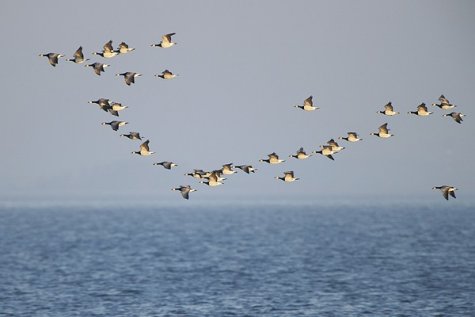Two million migrants at Põõsaspea
http://www.eoy.ee/poosaspea/
The sum for the season is now 2 millions! The passer-by to make the magic number was a long-tailed duck at 10:10.
1,85 million are waterfowl (ducks, geese, divers and others) and 0,15 million are pipers and gulls.
About 6-7 million waterfowl migrate from Europe’s taiga zone and the West-Siberian tundra to north-western Europe (including the Baltic and the North Sea) for wintering. The number has been even larger, but the decrease of the long-tailed ducks (from the oil pollution in the Baltic) has pulled it strongly downwards. At the same time the numbers of geese, barnacle geese and scoters have gone up, but not enough to keep the total numbers from being lower than the 9 millions of the 1990-ies.
The concentration of migrating birds to Põõsaspea is completely fantastic, even at the best of observation points in eastern Finland (basically on the migration path between western Siberia and north-western Europe) only a few percent of the Põõsaspea totals have been observed.
If the scarcity of young birds has been very noticeable among scoters, then again there has been a fantastic number of young among the long-tailed ducks. Despite this we have counted rather few long-tailed ducks at Põõsaspea, 250 000, which was the sum for just one day in the mid-1990’ies. Considering also that long-tailed ducks haven’t almost been observed at all on the Finnish coast this autumn, the diminishing population of long-tailed ducks is clearly concentrated to the Põõsaspea migration path
.








